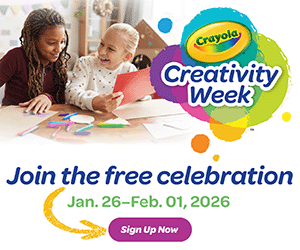/ News Posts / Strike Up a Conversation
Strike Up a Conversation
Experience Where the Magic Leads
By NAfME Member Lori Schwartz Reichl
“One good conversation can shift the direction of the change forever.”— Linda Lam
On a recent flight to Nebraska, I began chatting with the woman seated next to me. At one point, she asked me if I lived in Nebraska. I replied that I was heading there for work. She then asked what my work was. I told her I was a speaker and that it was my first trip to Nebraska. She asked what I would be speaking about. I told her that I was providing professional learning to educators, and I was excited to speak to them about topics such as beating burnout, finding motivation to make change, building relationships, and creating and maintaining a shared vision. I asked her what she did for work, as I had overheard from her previous conversation that she used her device for work. She quickly replied, “I own a company.”
I waited for the woman to elaborate on what the company is or does, but she did not. I did not ask her anything specific to keep the conversation going. The conversation fizzled. She went back to focusing on her device—at least I thought. A few moments later, the woman bent down to her bag and picked up two small items. She turned to me and handed me her business card and a nail file with her company’s name on it. I thought she was subconsciously telling me that my fingernails looked awful (which they did), as I had noticed her impeccably manicured nails! On her business card was the company’s name, about which I asked her several questions. I could tell immediately that she was smart, business savvy, and ambitious. I greatly enjoyed speaking to her and titled our meeting “Friends at First Flight.” By the time the plane had landed, we had connected on LinkedIn, and a few days later, we communicated via email and text. We shared connections and resources with one another, and we agreed to set up a quarterly meeting to check in, converse, and cheer each other on. In one of our email exchanges, my new friend, Jennifer Lea of Entry Envy, so eloquently wrote, “I truly believe our paths were meant to cross for reasons we’re not even certain of yet.”
That conversation with the intriguing woman on the plane almost didn’t happen. After her brief response that she owned a company, I did not follow up with her by asking her to share more. Her unwillingness to share more with me immediately had me thinking that she did not want to continue a conversation with me. But, after what felt like a long pause, she did, on her own. And it felt like magic when that conversation shot off like a rocket.

Photo by Jessica Da Rosa on Unsplash
Device Distractions
With the limitless use of devices in every environment of our lives, striking up a conversation with someone we know, let alone a stranger, seems almost foreign these days. There is something about the ease of digital communication that can make face-to-face conversations feel more intimidating, awkward, or even unnecessary. All of this while we seem more connected than ever (or at least we think we are–in a digital sense, that is). Sometimes, it feels as though the instant gratification of device messaging has made us less practiced in real-time interactions, such as talking on the phone or speaking in person. Have you found it difficult to start conversations with people lately, or is it more of an observation you have made? How practiced are you in putting your device away in the presence of others? This is a habit I continue to work on daily.
Advantages to Conversation
Consider ways to strike up a conversation with a student or colleague beyond the learning space, such as by conversing in the hallway, at the entry way to class, in the cafeteria, or at another school event. Striking up a conversation with a student can be helpful in fostering a positive and supportive learning environment. It creates an opportunity to build trust and rapport, allowing students to feel more comfortable and confident in expressing their thoughts, ideas, and concerns. Informal interactions can allow for better understanding of students’ individual needs, strengths, and challenges, possibly providing a foundation for more guidance and support to be offered. Engaging in conversations beyond the classroom can spark curiosity, encourage critical thinking, and deepen students’ understanding of content. Ultimately, these conversations may help strengthen students’ social, emotional, and academic growth, improve motivation, build confidence, and elevate overall engagement in the learning process.
The 5 Key Changes Needed to Strike Up a Conversation
Striking up a conversation with someone may not always be easy or comfortable. Fortunately, it is a skill we can practice and improve over time.
Consider these key changes for striking up a conversation with a stranger, a colleague, a student, or even a loved one:
Key Change #1: Start with a Friendly Observation
Notice something about the person or something around both of you and comment on it. It could be the weather, a book they’re holding, or something you saw them wear, say, or do. For example:
- “I love that coat! That’s such a great color on you! Where did you get it?”
- “Is that a new book? Who’s the author? What do you think of it?”
- “I overheard you speaking about football. Who is your favorite player or team?”
Be nice. Reach out. And see where your conversation leads.
Key Change #2: Ask an Open-Ended, Yet Somewhat Specific Question
Open-ended questions encourage the other person to share more than just a “yes” or “no” answer, which can keep a conversation going. Consider asking something like
- “What’s been the highlight of your week so far?”
- “How did you get into that hobby or job?”
- “What is your favorite genre of music and why?”
Consider phrases like, “Tell me more!” “What do you think about such and such?” “What else can you share?” These key phrases help to keep the conversation going.
Key Change #3: Share Something Unique about Yourself
Sometimes, offering a personal tidbit about ourselves can make it easier for the other person to open up, too. Be vulnerable and see if it is reciprocated.
Key Change #4: Compliment
A genuine compliment can make the other person feel good and more open to engaging in conversation. Make your compliment specific and sincere. You may just make the other person’s day, allowing a conversation to flow from it.
Key Change #5: Find Common Ground
If you are in a setting like school, in the cafeteria or gymnasium, or at recess, you already share a location or activity with one another. Use that common ground as a jumping-off point for conversation.
Perceptions and Possibilities
The key to striking up a conversation is to start with something light and brief. Avoid putting too much pressure on the conversation or person. Be aware of body language, too. Sometimes, a smile or a relaxed posture can make it easier for the other person to engage with you. We might not even realize that we have our arms crossed in front of our body, that there is a scowl on our face, or our earbuds are still set in our ears. Being mindful of body language can also help you gauge whether the person is open to a conversation.
People can be nervous or preoccupied with other things or thoughts. They might be exhausted or sentimental. Speaking may not come easily for them at that time. However, they may appreciate the effort. Strike up a conversation and experience where the magic leads!
How are we making key changes to strike up a conversation with someone? Listen to episode #57 of the Making Key Changes podcast, titled “Strike up a Conversation” to unlock conversation in your classroom, school, or home.
Photo at top by Christina @ wocintechchat.com on Unsplash
About the author:
NAfME member Dr. Lori Schwartz Reichl is the visionary thought leader of Making Key Changes. Her career began in music education where she learned the importance of a key change—a shift in the tonal center of a piece of music, often used to inject energy or produce significance. She eventually realized the necessity and impact of making key changes in many areas of her life and the desire to help others do the same.
Since transitioning out of one classroom as a public school teacher, Lori has uniquely created a global classroom for her work. She motivates organizations, teams, and individuals to reflect on their daily practices and offers actionable key changes to grow. She guides all contributors to create and maintain a shared vision in their communities, companies, classrooms, and careers. Together, they unlock their greatest potential in collaboration with those they love, serve, and lead.
Learn more about Dr. Lori Schwartz Reichl at MakingKeyChanges.com. Subscribe to her Making Key Changes weekly newsletter and listen to her weekly podcast.
Interested in reprinting this article? Please review the reprint guidelines.
The National Association for Music Education (NAfME) provides a number of forums for the sharing of information and opinion, including blogs and postings on our website, articles and columns in our magazines and journals, and postings to our Amplify member portal. Unless specifically noted, the views expressed in these media do not necessarily represent the policy or views of the Association, its officers, or its employees.
Published Date
May 6, 2025
Category
- Careers
- Lifelong Learning
Copyright
May 6, 2025. © National Association for Music Education (NAfME.org)







